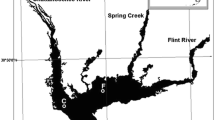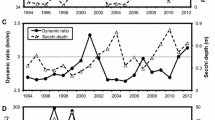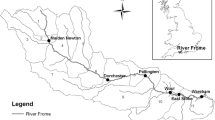Abstract.
This work presents a scenario to demonstrate how a given lake (Lake Stora Kröntjärn, Sweden) would respond to changes in colour related to lumbering operations in its watershed. The questions posed are: How would lake colour values increase, for how long would such increases last and how would this influence the production and biomasses of key functional organisms in the lake? The work is based on a comprehensive lake ecosystem model, LakeWeb, which accounts for production, biomasses, predation, abiotic/biotic interactions of nine key functional groups of organisms, phytoplankton, bacterioplankton, two types of zooplankton (herbivorous and predatory), two types of fish (prey and predatory), as well as zoobenthos, macrophytes and benthic algae. The LakeWeb-model has been calibrated and critically tested using empirical data and regressions for many lakes and it can capture typical functional and structural patterns in lakes. To obtain results like these by traditional field-work in one or more lakes would be very demanding (in terms of money, persons and time). It has been shown that single tributary peaks in colour concentrations are often "drowned" in weekly mean lake values. The lumbering operations must be extensive and continue for a long time to cause significant increases in tributary colour values in order to significantly influence fundamental lake foodweb structures. This means that it is often realistic to assume that lumbering activities do not strongly influence lake foodweb structures. The LakeWeb-model with the given mass-balance model for lake colour can be a useful tool to assess situations when this might not be valid.
Similar content being viewed by others
Author information
Authors and Affiliations
Additional information
Received: 6 September 2001; revised manuscript accepted: 1 December 2001
Rights and permissions
About this article
Cite this article
Håkanson, L. Lumbering operations, lake humification and consequences for the structure of the lake foodweb: A case study using the LakeWeb-model for Lake Stora Kröntjärn, Sweden. Aquat. Sci. 64, 185–197 (2002). https://doi.org/10.1007/s00027-002-8066-9
Issue Date:
DOI: https://doi.org/10.1007/s00027-002-8066-9




